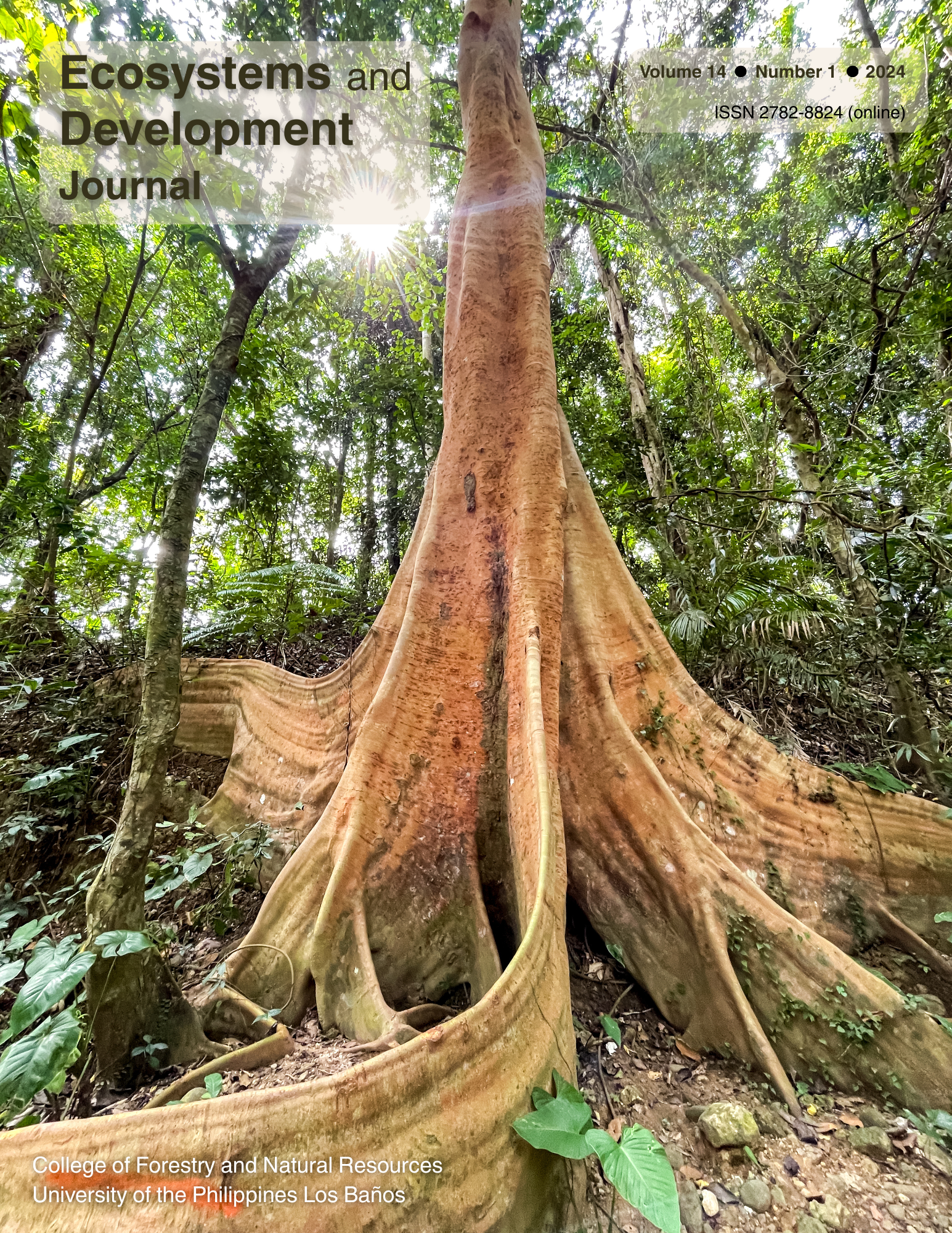The effect of urban sprawl on forest carbon stocks in La Mesa Watershed Reservation, Metro Manila, Philippines
Abstract
The La Mesa Watershed Reservation (LMWR) has experienced deforestation due to rapid urbanization. However, urban expansion at the expense of forest has resulted in changes in carbon storage in the watershed, which have not been fully quantified, hence this study. QGIS and TerrSet Land Change Modeler (LCM) were used to detect and map the emerging urbanization in LMWR using the supervised land cover classification generated from 2010 and 2020 Landsat satellite images. For the analysis of urbanization impacts on forest carbon stock, the transition from open forest to built-up areas was measured, and the carbon stock lost from the conversion was quantified using the 2020 forest resource inventory collected from the Metropolitan Waterworks and Sewerage System (MWSS). The results revealed that the forest cover loss between 2010 and 2020 was directly associated with urban sprawling. About 28 ha of forests were converted into built-up areas, resulting in a carbon stock loss of 3,525.17 tons in tree biomass, equivalent to 12,925.62 tons of CO₂ emissions. Furthermore, the total forest carbon stock in 2020 would increase by 1.42% if the forest were not converted into built-up areas and would have had 252,019.42 tons of carbon or sequestered 924,071.19 tons of CO₂. Thus, urban sprawl negatively influences the total forest carbon stock of the watershed. Urban sprawl, driven by socio-economic factors and whose human activities—such as waste disposal, livelihood, and illegal activities—seriously threaten any conservation, reforestation, and protection efforts in the area. However, urbanization provides critical space for housing, industry, and economic development, which may improve livelihoods and support societal progress. The trade-offs are evident as urban sprawl can significantly hinder reforestation, conservation, and protection efforts, exacerbating environmental degradation. Human activities associated with urban growth—such as waste disposal, livelihood pressures, and illegal practices—further contribute to the loss of valuable ecosystem services, necessitating careful planning and management to balance these competing land-use demands. The capacity of the watershed to effectively store carbon and provide other essential ecosystem services is contingent upon alterations in governmental spatial policy planning and management interventions that regulate urban land use development and guarantee the preservation of the existing forested areas.


